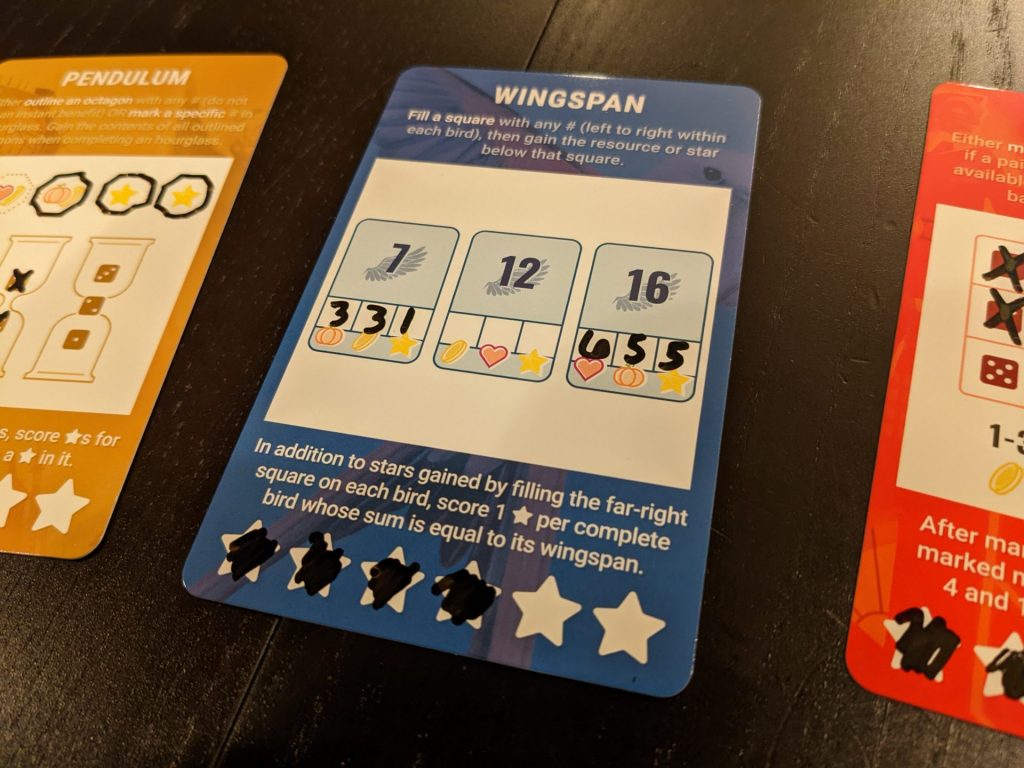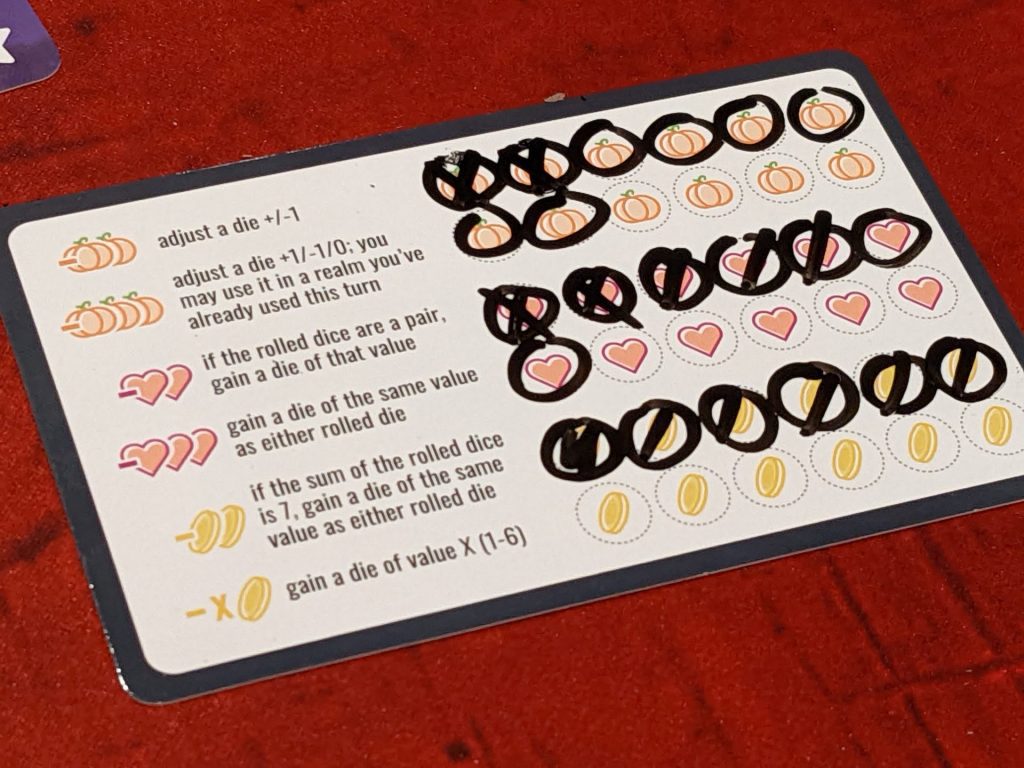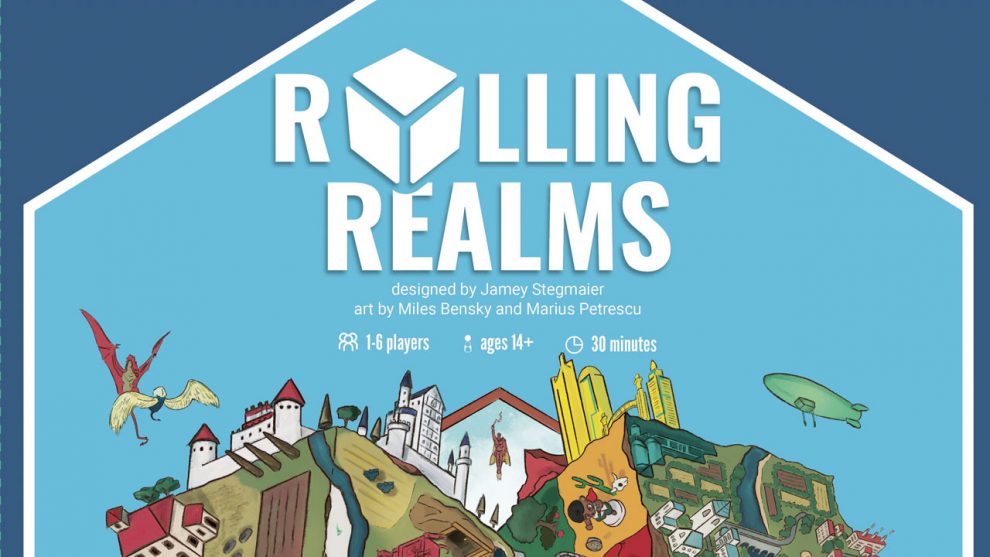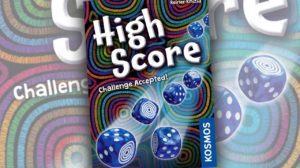Disclosure: Meeple Mountain received a free copy of this product in exchange for an honest, unbiased review. This review is not intended to be an endorsement.
Spring, 2020. That early timeframe with COVID was something else, right?
Lots of good. Lots of not-as-good. Lots of downright bad. And lots of uncertainty. Was it ever going to really be over?
Jamey Stegmaier, the designer of Scythe and many other tabletop winners, came up with an interesting game during COVID: a roll-and-write that takes a single element from each major Stonemaier Games release and combines them into a single product.
This output is called Rolling Realms, and it falls squarely into what I consider “heavy” roll-and-write experiences. Many other experiences have been lighter, such as Railroad Ink: Deep Blue Edition, the Welcome To… games, and the Clever series of games from Wolfgang Warsch.
Other roll-and-writes (or “flip-and-fill” games, which use cards instead of dice) are heavier, such as Hadrian’s Wall and Dinosaur Island: Rawr ‘N Write. Rolling Realms comes close to those games (in terms of complexity) and provides a fun experience for heavy strategy gamers looking for something “light.”
I just wish it was a little shorter.

My Favorite Dice? A New Contender Emerges!
Rolling Realms plays out over 27 turns across 3 rounds. The player who ends with the most stars wins.
Armed with a score sheet and a resource tracker, each round plays out the same way: from a pool of 11 cards per player, a random set of 3 cards will be played. Each card represents another Stonemaier game, such as Wingspan, Red Rising, Viticulture, and Charterstone. (Red Rising’s realm card is “The Society” in Rolling Realms.)
Each card slims the entire experience of those other games to a single dynamic, tied to the shared use of two 6-sided dice. On a turn, someone rolls the dice, and players have to use one of the dice to fill in spaces on one of their card domains, while using the other die to fill in spaces in one of the remaining two domains.
And, each card has different rules. On the Between Two Cities card, you will write in the number of a die in one of 9 spaces, laid out in a Tic Tac Toe-style, 3×3-space grid. The only rule? Identical numbers can’t be in orthogonally adjacent spaces. This card scores like the main scoring mechanic in the original Between Two Cities game: your final score will be the lower of the two cities you design, so in Rolling Realms, this card will score a max of the lower of your other two cards that round.
On the Scythe card, you’ll use a die to cross out one of the 6 numbers on the top row, gaining a resource. And you can take a bottom-row action if you have the funds to do so, marking off another number and getting a star for completing any single column. This, just like the board game, makes Rolling Realms fun and intuitive if you happen to know the source code. (This isn’t a requirement. I’ve never played the full game of Pendulum but the card rules in Rolling Realms for that realm are easy to pick up.)
All the while, nearly every turn, you’ll get a resource for completing something on one of the cards. Rolling Realms tracks three resources: pumpkins, hearts and coins. During a turn, players can spend these resources to trigger even more combos by changing some game effects: pumpkins can alter a die for a player’s personal use +/- 1, and hearts can be useful when doubles are rolled.
As a result, Rolling Realms grants a ton of variety in each play thanks to the dice. And those dice are juicy. Roughly double the size of regular dice and colored green and blue, Rolling Realms’ best moments might come each time you put those dice in your hands.
In this way, Stonemaier once again sticks the production components landing. The dice are great. The dry-erase pens are fantastic and the eraser pads might be even better. The card stock is perfect for writing on, and the rulebook does the job.

Quiet, Please
However, Rolling Realms didn’t work for me in a couple of areas. The first is the sheer lack of player interaction; ultimately, it’s a solo game, with literally nothing that another player can do to stop your flow. Save for teaching players the rules of each card—which may not even be necessary, because the explanations on the cards are uniformly strong—you won’t really talk to anyone all game until you share your final scores.
That’s a concern for me with most roll-and-write games, so I won’t pretend low interaction is an issue unique to Rolling Realms. My main criticism is the length of play: 30 minutes is too long for a game that doesn’t really provide any magical moments by simply playing it for 9 extra die rolls.
I would be completely happy to play 6 of the cards over 2 rounds, instead of 9 cards over 3 rounds. Resources that are unused are scored then wiped between rounds, so it’s not like you can save up all of your resources for some big killer third round. Twenty minutes instead of 30 makes a difference, so I will likely house-rule this down a round in the future.

Solo Fun
Rolling Realms comes with a solitaire “minigolf” variant that landed just right for me, and it’s my preferred mode of play for the overall experience.
Zero downtime and fun solo challenges. Stonemaier has done a great job with automa in other games and Rolling Realms is no exception. And since there’s no interaction with other players anyway, the solitaire variant is a great way to decompress away from a TV screen.
The main game with other players is still fun, as long as you can keep the player count low. Rolling Realms plays up to 6 (and many more, if you have additional copies of the game, since dice rolls are shared), but waiting for everyone to finish their action before the next die roll can really slow down a game already 10-15 minutes too long.
No matter what you do, lay back and roll those dice. Chunky dice feel good in the hands, and the dice in Rolling Realms are some of the best!











